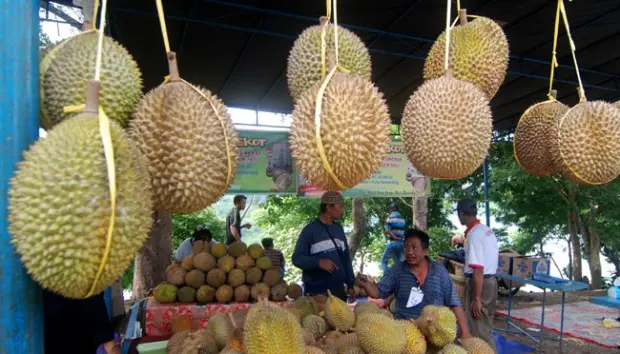
TEMPO.CO, Jakarta - The durian is immensely popular across Southeast Asia, particularly in Indonesia, Malaysia, and Thailand. Recently, the Durian Manufacturers Association (DMA) submitted a formal request to the Malaysian government. This request seeks to designate the iconic, spiky fruit as the national fruit and establish July 7th as National Durian Day, as reported by The Straits Times.
Malaysia is home to numerous durian varieties, ranging from the globally recognized Musang King (D197) to unique cultivars like Sunset (D18). According to information from the Ministry of Agriculture and Agro-Based Industry of Malaysia, the alphanumeric code found in Malaysian durian names, such as the "D197" in Musang King, is the official variety registration number assigned by the Malaysian Department of Agriculture. The preceding letter D simply denotes "Durian."
Top 10 Popular Durian Varieties in Malaysia
As reported by Lifestyle Asia, let's explore 10 prominent durian types frequently enjoyed in Malaysia:
1. Musang King (D197)
This variety, familiar to most consumers, has a custard-like texture and a flavor profile that is sweet with a subtle hint of bitterness. Its husk tends to be round with short, conical thorns. Commonly sourced from the northern state of Kelantan, it is typically the most expensive variety available.
2. XO (D24)
A subdivision of the D24 variety, the name "XO" suggests an "alcoholic" nuance in its aroma or taste. It offers a rich, sweet profile complemented by a distinctive tangy finish. Generally cultivated in Pahang, it is characterized by closely packed thorns and a slightly flattened base.
3. Red Prawn (D175)
This durian features reddish-yellow flesh, with pods often described as being shaped like prawns. It has a soft, tender texture and a predominantly sweet flavor, ending with a faint bitterness.
4. Golden Phoenix (D198)
Offering a smooth sweetness combined with a touch of fermented acidity, this durian has a slightly elongated shape and slender thorns. It is extensively cultivated in Johor.
5. Black Thorn (D200)
Distinguished by darker thorn tips and dense yellow flesh, this variety has comparatively small seeds. It presents a strong sweetness coupled with a faint bitterness, making it a favorite among enthusiasts who appreciate "characterful" durians.
6. Cheong Peng (D158)
Diverging from other common durians, this type stands out with a more pronounced sourness. Its pale yellow flesh contains small seeds, making it suitable for those who prefer to avoid excessive sweetness.
7. Sunset (D18)
Featuring uniquely orange-colored flesh, its flavor is sweet with a distinctive bitterness reminiscent of tannins. It is available in various regions and is often sought after for its vibrant pigmentation.
8. Golden Bun (D13)
It offers a smooth, sweet taste that is not overwhelming. This durian has bright yellow, dense flesh and is often recommended as an excellent entry-level choice for durian beginners. It is usually sourced from the southernmost state of Johor.
9. Second Son (D3)
This variety has a unique flavor profile that is sweet yet somewhat nutty. Its flesh is typically yellowish-green. Although it can be found across most Malaysian states, its market availability is relatively limited compared to more popular types.
10. Green Head (D10)
True to its name, this durian exhibits a bright green husk, an elongated shape, and short, brown-tipped thorns. It possesses a rich taste that tends to leave a lingering flavor on the palate.
How to Select the Perfect Durian
To avoid disappointment when purchasing durian, follow these proven selection tips:
1. The "Knock Test": Gently tap the husk with a stick or the flat of a knife. A sound that is somewhat hollow, akin to a drumbeat, suggests the presence of air cavities, which is an indicator that the flesh inside is optimally ripe.
2. Thorn Flexibility: Check the flexibility of the thorns. Thorns that break easily suggest the fruit is ready to consume, while stiff, rigid thorns should generally be avoided.
3. Know Your Variety: Understand the specific characteristics of the chosen variety, particularly the pod and seed sizes. Varieties like Musang King and Black Thorn are renowned for their thick, high-flesh-to-seed ratio.
4. Aroma, Shape, and Husk Condition: Finally, check the aroma, concentrating the sniff at the base of the fruit. Inspect the overall shape and condition of the husk, and avoid durians that show wet cracks or emit an unusual, overly pungent odor.
Annisa Nur Alimah contributed to the report
Click here to get the latest news updates from Tempo on Google News
